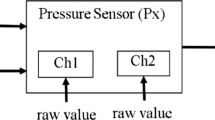Abstract
A recurring difficulty for organizations that employ a product-line approach to development is that when a new product is added to an existing product line, there is currently no automated way to verify the completeness and consistency of the new product’s requirements in terms of the product line. In this paper we address the issue of requirements verification for product lines. We have implemented our approach in a requirements engineering tool called DECIMAL (DECIsion Modeling AppLication). DECIMAL is a requirements verification tool with a rich graphical user interface that automatically checks for completeness and consistency between a new product and the product line to which it belongs. The verification uses an SQL database server as the underlying analysis engine. The paper describes the tool and evaluates it in two applications: a virtual-reality, positional device-driver product line and the feature-interaction resolution problem.
Similar content being viewed by others
Explore related subjects
Discover the latest articles, news and stories from top researchers in related subjects.References
Ardis, M., Daley, N., Hoffman, D., Siy, H., and Weiss, D. 2000. Software product lines: A case study. Software Practice and Experience, 825–847.
Ascension Technology Corporation. http://www.ascension-tech.com/
Atkinson, C., Bayer, J., Bunse, C., Kamsties, E., Laitenberger, O., Laqua, R., Muthig, D. Paech, B., Wust, J., and Zettel, J. 2002. Component-Based Product Line Engineering with UML. London: Addison-Wesley.
Bass, L., Clements, P., Donohoe, P., McGregor, J., and Northrop, L. 1999. 4th Product Line Practice Workshop Report, CMU/SEI-2000-TR-002, Software Engineering Institute, CMU.
Bierbaum, A. 2000. VR Juggler: A virtual platform for virtual reality application development. MS Thesis, Iowa State University, Ames, IA.
Clements, P. and Northrop, L. 2002. Software Product Lines.Boston: Addison-Wesley.
Doerr, J. 2002. Requirements engineering for product lines: Guidelines for inspecting domain model relationships. Diploma thesis, University of Kaiserslautern.
Feather, M. S. 1998. Rapid application of lightweight formal methods for consistency analyses. IEEE Trans. Software Eng. 24: 949–959.
Ghezzi, C., Jazayeri, M., and Mandrioli, D. 2003. Fundamentals of Software Engineering, 2nd ed. Upper Saddle River, NJ: Prentice-Hall.
Gomaa, H. 1995. Reusable software requirements and architectures for families of systems, Journal of Systems and Software, 28: 189–202.
Griffeth, N.D. and Velthuijsen, H. 1994. The negotiating agents approach to runtime feature interaction resolution. In L.G. Bouma, and H. Velthuijsen, editors, Feature Interactions in Telecommunications Systems, IOS Press: Amsterdam, pp. 217–235.
Homayoon, S., and Singh, H. 1988. Methods of addressing interaction of intelligent network services with embedded switch services. IEEE Communications Magazine, 26(12): 42–70.
Jaring, M. and Bosch, J. 2002. Representing variability in software product lines: A case study. In G. Chastek, editors, Software Product Line Conf (SPLC2), LNC2379, Berlin Heidelberg: Springer Verlag, pp. 15–36.
Just, C., Bierbaum, A., Baker, A., and Cruz-Neira, C. 1998. VR Juggler: A framework for virtual reality development. 2nd Immersive Projection Technology Workshop, Ames, IA.
Lam, W. 1998. A case study of requirements through product families. Annals of Software Engineering, 253–277.
Lee, K., Kang, K.C., Chae, W., and Choi, B.W. Feature-based approach to object-oriented engineering of applications for reuse. Software—Practice and Experience, 30: 1025–1046.
Li, H., Krishnamurthi, S., and Fisler, K. 2002. Verifying cross-cutting features as open systems. 10th ACM SIGSOFT Symp. Foundations of Software Eng. Charleston, SC, pp. 89–98.
Lutz, R. 2000. Extending the product family approach to support safe reuse Journal of Systems and Software, 53: 207–217.
Lutz, R. and Gannod, G. 2003. Analysis of a software product line architecture: an experience report. Journal of Systems and Software, 66: 253–267.
Parnas, D. 1976. On the design and development of program families. IEEE Trans Software Eng, 2.
Padmanabhan, P. 2002. DECIMAL: A requirements engineering tool for product families. M.S. Thesis, Iowa State University, Ames, IA.
Padmanabhan, P. and Lutz, R. 2002. DECIMAL: A requirements engineering tool for product families. Int’l. Workshop Requirements Eng. For Product Lines (REPL’02), Essen, Germany, pp. 39–44.
VRCO TrackD http://www.vrco.com/products/trackd/trackd.html
Weiss, D. and Lai, C. 1999. Software Product Line Engineering: A Family-Based Software Development Process. Reading, MS: Addison Wesley.
Zave, P. 2001. Requirements for evolving systems: A telecommunications perspective. In 5th Int’l Symp. Requirements Eng., pp. 2–9.
Author information
Authors and Affiliations
Corresponding author
Rights and permissions
About this article
Cite this article
Padmanabhan, P., Lutz, R.R. Tool-Supported Verification of Product Line Requirements. Autom Software Eng 12, 447–465 (2005). https://doi.org/10.1007/s10515-005-2648-4
Issue Date:
DOI: https://doi.org/10.1007/s10515-005-2648-4




